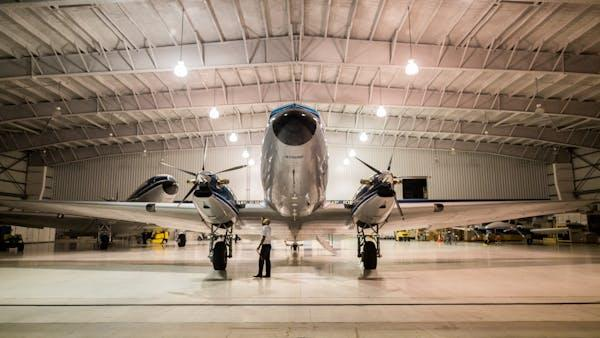
When it comes to aircraft hangars, safety, efficiency, and functionality depend on proper lighting. Whether it’s for day-to-day operations, maintenance or inspections, choosing the right lighting solution for airport hangars is of paramount importance. These spaces are vast, so the lighting needs to provide adequate illumination by considering factors like durability, energy efficiency, and maintenance costs. Various lighting technologies offer different benefits. But there are various challenges when it comes out using traditional lights for aircraft hangars. Hence LED lighting is considered to be the best choice for this application.
Benefits of LED Lighting in Airport Hangars
LED lighting stands out for its superior energy efficiency and durability. If you want to reduce energy consumption, look for LED commercial light fixtures for sale. These lights also require less frequent replacement, thus lowering downtime and maintenance costs in hangar operations.
Many aircraft hangars have successfully transitioned to modern LED lighting solutions to achieve significant cost savings and operational improvements. LED installations have proven to offer considerable benefits in terms of energy savings and enhanced visibility. Advancements in smart lighting technologies are also set to revolutionize hangar spaces. Integration with IoT systems also allows for adaptive lighting controls, remote monitoring, and predictive maintenance, thus further optimizing operational efficiency.
Challenges With Traditional Lighting Solutions
Fluorescent and traditional HID lighting solutions, though initially cheaper, often come with higher maintenance costs due to higher energy consumption and shorter lifespans. Apart from this, they also pose environmental challenges, like mercury disposal in the case of fluorescent bulbs. LED light fixtures often offer several advantages over traditional options.
LED light fixtures are highly energy efficient and consume less electricity for the same brightness compared to traditional lighting options. They also have reduced maintenance costs, a longer lifespan, and downtime in hangar operations. LED light fixtures also provide better light quality, with more uniform illumination and reduced glare, which is crucial in aircraft maintenance environments for safety and productivity.
Designing LED Lighting Layout for Aircraft Hangars
Effective lighting design for aircraft hangars should focus on achieving uniform illumination across the space. Proper placement and spacing of lights will ensure that all areas, including aircraft maintenance zones and workstations, receive adequate light for safe and efficient operations. Several factors should be considered when designing an LED lighting layout for hangars, such as:
- Energy efficiency: Going for lighting solutions that minimize energy consumption and operation costs.
- Uniform illumination: Ensuring consistent light levels across the entire space.
- Safety and compliance: Adhering to FAA regulations and local building codes.
- Operational needs: Customizing the lighting design to specific tasks performed, like aircraft inspections, repairs and storage.
Regulatory Requirements for Hangar Lighting
Aviation authorities have set stringent hangar lighting guidelines to ensure safety and compliance with aviation standards. These laws dictate factors such as glare reduction, color rendering, light intensity levels, use of energy-efficient technologies, and emergency lighting provisions. Likewise, the FAA has set specific guidelines for hangar lighting requirements to ensure safety and compliance with aviation standards. Compliance is essential for maintaining operational certifications and ensuring a safe environment for aircraft operations and maintenance.
To Conclude
Selecting the best lighting for an aircraft hangar goes beyond just brightness and aims to choose a lighting solution that balances operational needs, compliance with safety standards, and energy efficiency. LED lighting has emerged as a pioneer, thus offering superior performance and long-term cost savings while also meeting regulatory requirements.
Featured Image Source: https://images.pexels.com/photos/2382848/pexels-photo-2382848.jpeg?auto=compress&cs=tinysrgb&w=600


Disclaimer: PacLights is not responsible for any actions taken based on the suggestions and information provided in this article, and readers should consult local building and electrical codes for proper guidance.